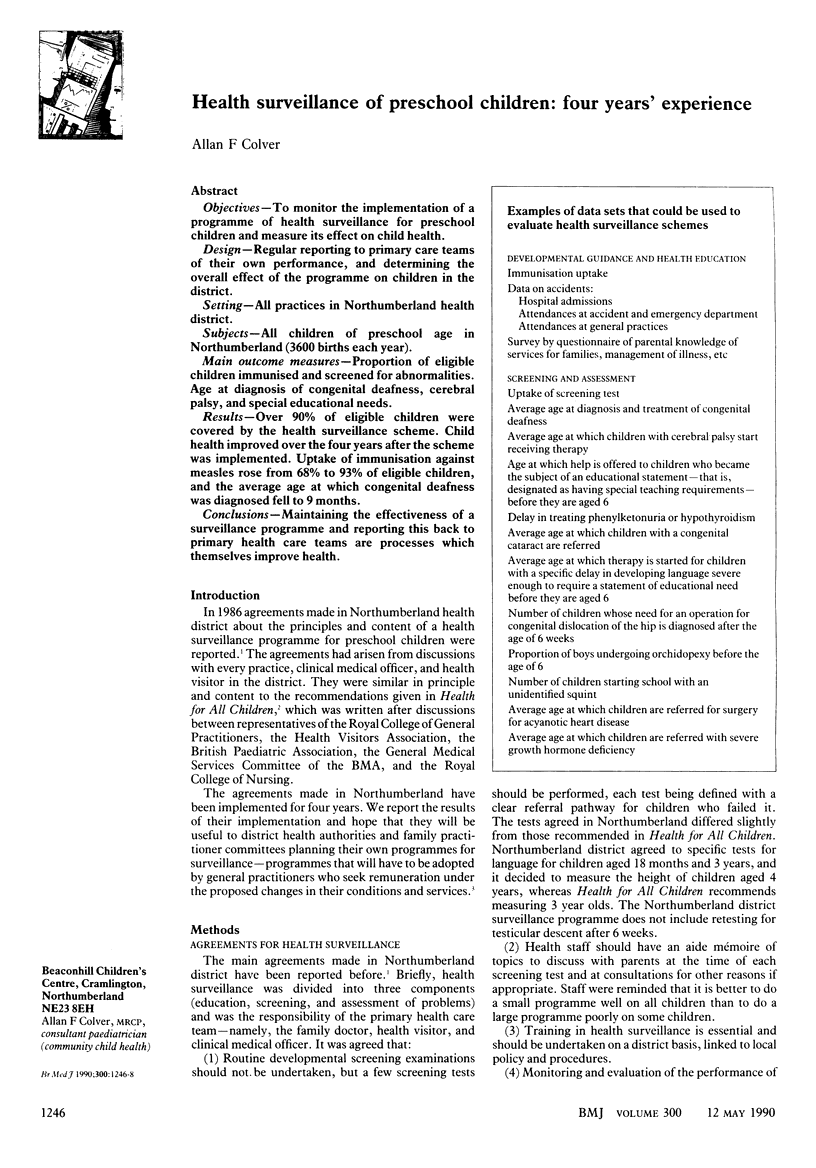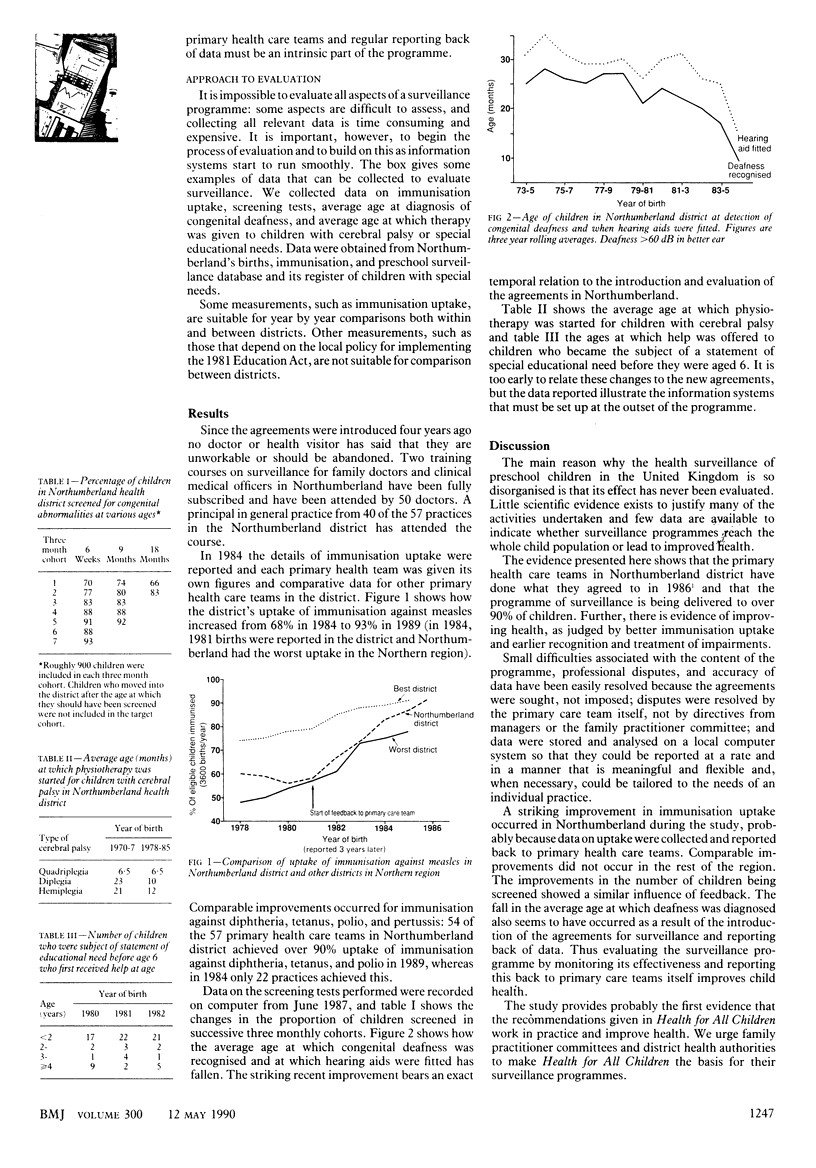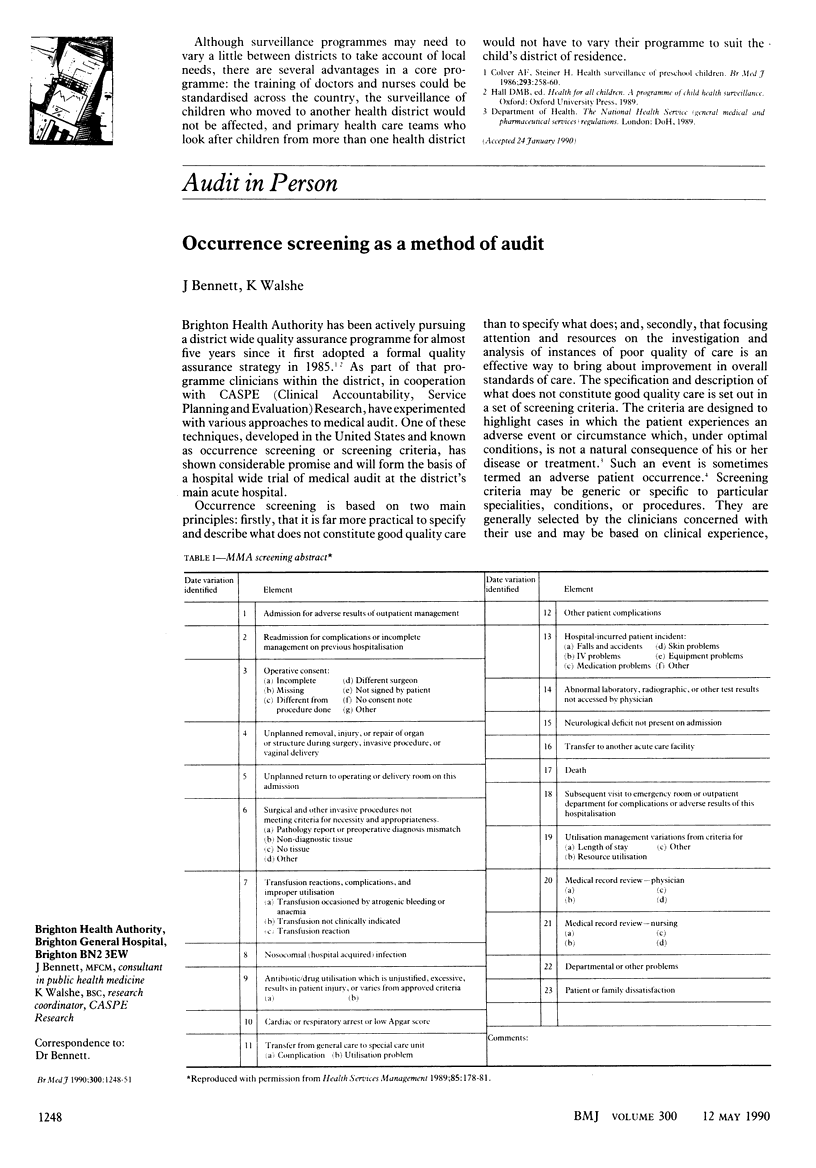Abstract
OBJECTIVES--To monitor the implementation of a programme of health surveillance for preschool children and measure its effect on child health. DESIGN--Regular reporting to primary care teams of their own performance, and determining the overall effect of the programme on children in the district. SETTING--All practices in Northumberland health district. SUBJECTS--All children of preschool age in Northumberland (3600 births each year). MAIN OUTCOME MEASURES--Proportion of eligible children immunised and screened for abnormalities. Age at diagnosis of congenital deafness, cerebral palsy, and special educational needs. RESULTS--Over 90% of eligible children were covered by the health surveillance scheme. Child health improved over the four years after the scheme was implemented. Uptake of immunisation against measles rose from 68% to 93% of eligible children, and the average age at which congenital deafness was diagnosed fell to 9 months. CONCLUSIONS--Maintaining the effectiveness of a surveillance programme and reporting this back to primary health care teams are processes which themselves improve health.
Full text
PDF


Selected References
These references are in PubMed. This may not be the complete list of references from this article.
- Colver A. F., Steiner H. Health surveillance of preschool children. Br Med J (Clin Res Ed) 1986 Jul 26;293(6541):258–260. doi: 10.1136/bmj.293.6541.258. [DOI] [PMC free article] [PubMed] [Google Scholar]


